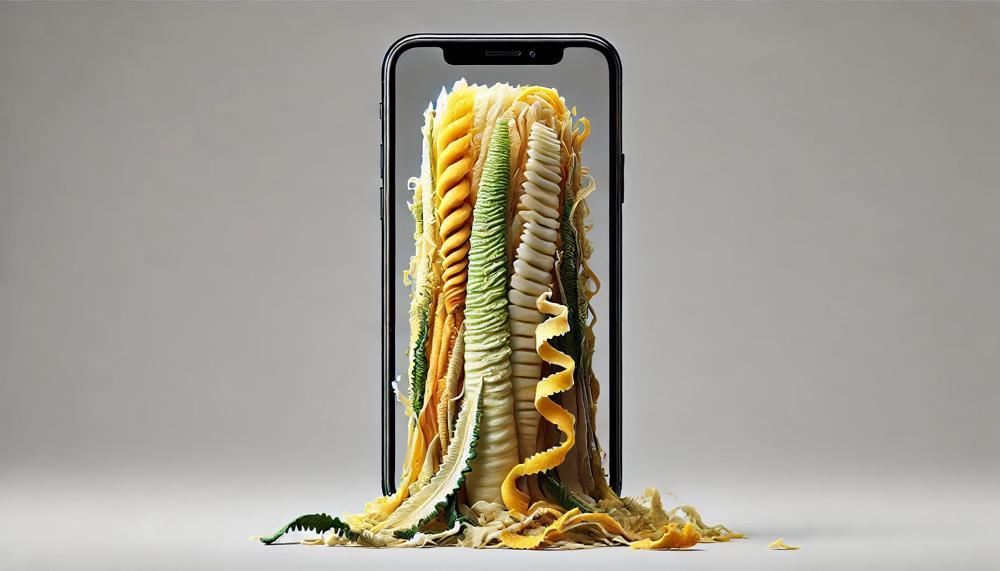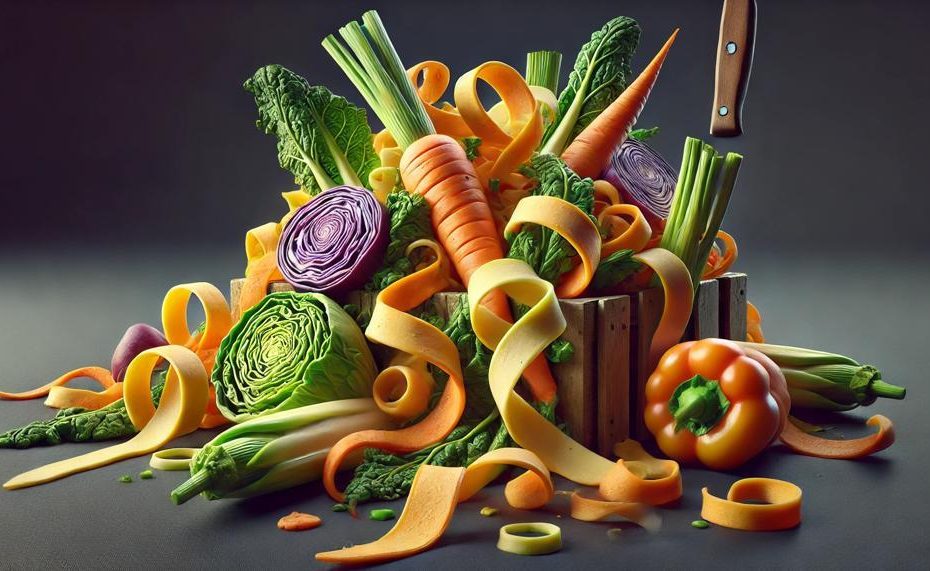Vegetable peelings are often seen as mere kitchen scraps destined for the trash can, but tossing them away can release methane gas and attract unwanted pests like maggots and flies. Not only does this contribute to environmental pollution, but it also turns valuable nutrients into waste. Instead, let’s explore practical ways to handle these peelings responsibly, turning potential problems into beneficial solutions.
Did you know that household waste is largely composed of fruit and vegetable peelings? While they might not be suitable for recycling, there are numerous creative and eco-friendly ways to repurpose them. From enriching your garden to enhancing your meals and skincare routines, vegetable peelings can be surprisingly versatile.
Here are some key takeaways for responsible disposal and reuse of vegetable peelings:
- Composting: Convert your peelings into nutrient-rich compost to fertilize your garden.
- Cooking: Use peelings in broths, soups, and even snacks to add flavor and reduce food waste.
- Skincare: Create natural beauty products with the nutrients found in vegetable peels.
- Animal Treats: Certain vegetable peelings can be used to make healthy treats for pets.
- Zero Waste: Reduce your household waste and contribute to a cleaner environment.
By rethinking how we dispose of vegetable peelings, we not only minimize waste but also enhance the health of our homes and planet. Ready to turn your kitchen scraps into something amazing? Let’s dive into the world of creative peel recycling.
Contents
Reducing Food Waste
Reducing food waste, especially with vegetable peelings, can be highly beneficial. Here are some effective methods:
Composting
Backyard Composting:
- Vegetable peels can be turned into compost, enriching soil for gardening.
- Composting helps reduce landfill waste and the release of methane gas.
- Benefits: Adds nutrients to soil, improves plant growth, eco-friendly.
Indoor Composting:
- Use a small composting container in your kitchen.
- This method is ideal for those without garden space.
- Benefits: Convenient, reduces kitchen waste, easy to manage.
Culinary Uses
Broths and Stocks:
- Save peels from carrots, potatoes, and onions to make vegetable broth.
- Simply boil peels with water and seasonings.
- Benefits: Adds flavour to dishes, reduces waste, cost-effective.
Chips and Snacks:
- Potato and carrot peels can be baked into healthy chips.
- Season with spices and bake until crispy.
- Benefits: Healthy snack option, minimal waste, nutrient-rich.
Skincare and Household Uses
Natural Cleaners:
- Lemon peels can be used to clean surfaces.
- Infuse vinegar with citrus peels for a natural cleaner.
- Benefits: Chemical-free, reduces waste, effective cleaner.
DIY Beauty Treatments:

- Cucumber peels can soothe skin and reduce puffiness.
- Use potato peels to lighten dark circles under the eyes.
- Benefits: Natural skincare, reduces waste, cost-saving.
Animal Feed
Pet Treats:
- Carrot and apple peels can be safe treats for pets like rabbits and guinea pigs.
- Ensure the peels are clean and pesticide-free.
- Benefits: Healthy pet treats, reduces waste, economical.
Why Save Food Scraps?
Saving food scraps, especially vegetable peelings, is crucial for several reasons:
| Environmental Benefits | Saving and repurposing food scraps significantly reduces food waste, which in turn helps lower greenhouse gas emissions from landfills. Composting vegetable peelings enriches the soil, promoting healthier plant growth. |
| Financial Benefits | By repurposing commonly discarded parts of fruits and vegetables, such as peels and tops, into recipes or homemade products, you can save money on groceries and household items. |
| Health and Cleanliness | Proper disposal of food scraps prevents the attraction of pests like fruit flies, maintaining kitchen hygiene. It also ensures the kitchen stays clean and odor-free. |
| Nutritional Value | Vegetable peelings often contain high levels of nutrients and can be used to enhance the nutritional value of meals when used in broths or as added ingredients in recipes. |
Repurposing food scraps can make a tangible difference. For instance, apple peels can be used to make homemade apple cider vinegar, and citrus peels can be transformed into natural cleaners. Designating a container for food scraps while cooking helps streamline the process and ensures that you’re not throwing away valuable resources.
Examples of Food Scraps That Can Have a Second Life
Repurposing vegetable peelings can be a fun and eco-friendly way to reduce food waste. Here are some creative ideas:
- Make Vegetable Broth: Collect peelings from carrots, onions, celery, and other vegetables in a reusable container. When you have enough, simmer them in water with herbs and spices to create a flavourful broth. This broth can be used in soups, stews, and risottos.
- Create Veggie Chips: Potato, sweet potato, and carrot peelings can be turned into crispy chips. Toss them in a bit of olive oil, sprinkle with salt, and bake until crunchy. These make for a nutritious and delicious snack.
- Compost: Vegetable peelings are excellent for composting. They decompose quickly and enrich your soil, providing essential nutrients for your garden.
- Enhance Garden Soil: Blend vegetable peelings with water to make a nutrient-rich slurry. Pour this mixture directly into your garden beds to improve soil quality.
- Infused Oils and Vinegars: Use citrus peelings or herb stems to infuse oils or vinegars. These infusions can add unique flavours to your cooking.
- Natural Dye: Use colourful vegetable peelings, like those from beets or red onions, to create natural dyes for fabrics or Easter eggs.
- Flavouring Agents: Dry citrus peels and use them as seasoning for dishes or as a fragrant addition to your tea.
What to Do with Food Scraps
There are numerous inventive and sustainable methods to repurpose food scraps, particularly vegetable peelings, rather than discarding them. Here are some effective ways:
| Use | Description | Example |
| Composting | Transform food scraps into nutrient-rich compost for your garden. | Place vegetable peelings, coffee grounds, and eggshells in a compost bin. After a few months, use the compost to enrich your soil. |
| Broth and Stock | Make a flavorful vegetable broth or stock using scraps. | Collect onion skins, carrot tops, and celery ends, boil them with water, strain, and use as a base for soups. |
| Infused Water | Add peelings to water for a refreshing drink. | Cucumber and citrus peels can be steeped in water for a cool, flavoured drink. |
| Natural Cleaners | Create eco-friendly cleaning solutions. | Mix citrus peels with vinegar and let it sit for a few weeks to make a powerful, natural cleaner. |
| Homemade Chips | Bake vegetable peelings into a crunchy snack. | Toss potato or carrot peels with olive oil, season, and bake until crispy. |
| Pet Treats | Utilize scraps to make treats for pets. | Dehydrate sweet potato peelings for a healthy dog treat. |
| Skincare | Use certain peels for natural skincare remedies. | Apply banana peels to your skin to help with acne or use citrus peels for exfoliation. |
| Garden Fertilizer | Directly use peels to nourish plants. | Banana peels can be buried near rose bushes to provide potassium. |
| Natural Dye | Create dyes for fabrics or Easter eggs. | Boil onion skins or beet peels to dye fabrics or eggs naturally. |
| Aromatic Potpourri | Dry peels to make fragrant potpourri. | Combine dried citrus peels with spices like cinnamon for a homemade potpourri. |
By creatively reusing food scraps, you not only reduce waste but also contribute to a healthier and more sustainable lifestyle.
Be Scrappy with Food Waste
When it comes to disposing of vegetable peelings, there are several creative and eco-friendly methods that not only reduce waste but also repurpose these often-overlooked scraps into valuable resources.
Creative and Eco-Friendly Ways to Dispose of Vegetable Peelings
Composting
Vegetable peelings are perfect for composting. They decompose quickly, adding essential nutrients back into the soil. Start a compost bin in your garden to convert these scraps into rich compost.
| Material | Compost Time | Benefits |
| Vegetable Peelings | 2-4 months | Rich in nutrients, improves soil structure |
DIY Vegetable Broth
Save your vegetable peelings in a freezer bag until you have enough to make a flavourful broth. Simply boil them with water and spices, then strain the liquid for a homemade vegetable stock.
Natural Cleaners
Citrus peels, like those from oranges or lemons, can be used to create a powerful natural cleaner. Soak the peels in vinegar for a couple of weeks, strain, and use the solution for cleaning surfaces.
| Ingredient | Preparation | Uses |
| Citrus Peels | Soak in vinegar for 2 weeks | Surface cleaner, deodorizer |
Skincare Treatments
Potato and cucumber peels can be used in skincare routines. Potato peels can help reduce dark circles and puffiness around the eyes, while cucumber peels are hydrating and soothing for the skin.
Snacks
Transform certain vegetable peels into delicious snacks. For example, carrot and potato peels can be baked with a little olive oil and seasoning to make crispy chips.
Gardening Mulch
Use vegetable peelings as mulch in your garden. Spread them around your plants to help retain moisture and add nutrients to the soil as they break down.
Garbage Disposal
For an easy disposal method, use your garbage disposal unit. It’s a quick way to get rid of peelings, though it doesn’t offer the same eco-benefits as composting or repurposing.
Benefits of Repurposing Vegetable Peelings
- Reduces Waste: By finding creative uses for vegetable peelings, you significantly cut down on kitchen waste.
- Eco-Friendly: These methods are sustainable and help to reduce your carbon footprint.
- Cost-Effective: Making your own broth, cleaners, and snacks can save money.
Conclusion
Vegetable peelings, often considered kitchen waste, hold untapped potential that can transform your household routine and contribute to a more sustainable environment. Instead of discarding these nutrient-rich scraps, you can employ several innovative methods to repurpose them effectively.
One of the most beneficial ways to handle vegetable peelings is through composting. Both backyard and indoor composting turn these scraps into nutrient-rich soil, enhancing your garden’s productivity and reducing landfill waste. Additionally, vegetable peelings can be a culinary asset. Use them to make flavorful broths and stocks or create crispy vegetable chips, offering both a cost-effective and delicious way to reduce food waste.
Beyond composting and cooking, vegetable peelings can elevate your skincare routine and household cleaning. Cucumber and potato peels are excellent for natural beauty treatments, while citrus peels can be infused with vinegar to create powerful, chemical-free cleaners.
Moreover, some peelings make healthy, nutritious treats for pets, ensuring that nothing goes to waste. This practice not only benefits your household but also contributes to a cleaner, greener planet.
By creatively rethinking how we dispose of vegetable peelings, we can transform what was once waste into valuable resources, enriching our lives and our environment.





